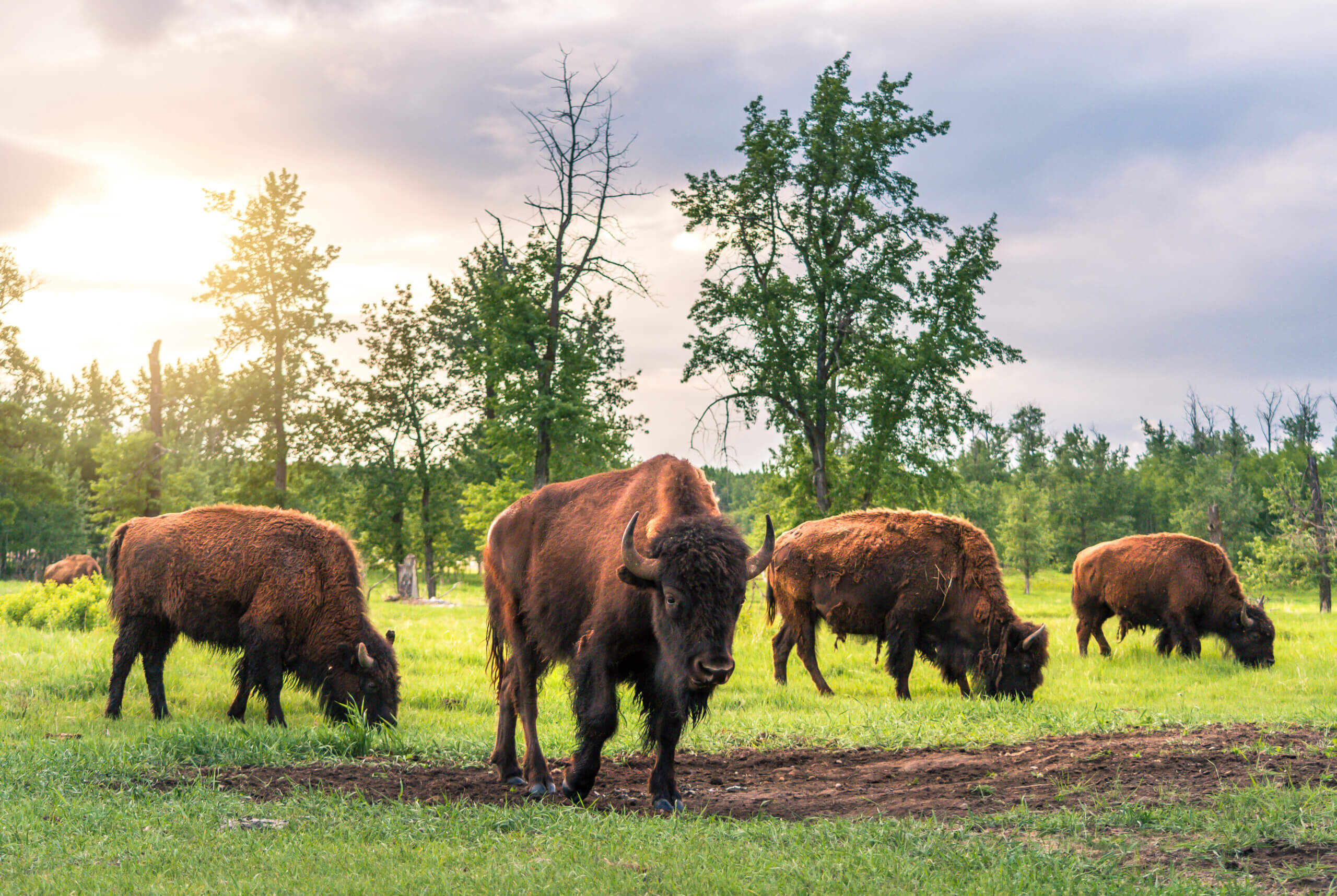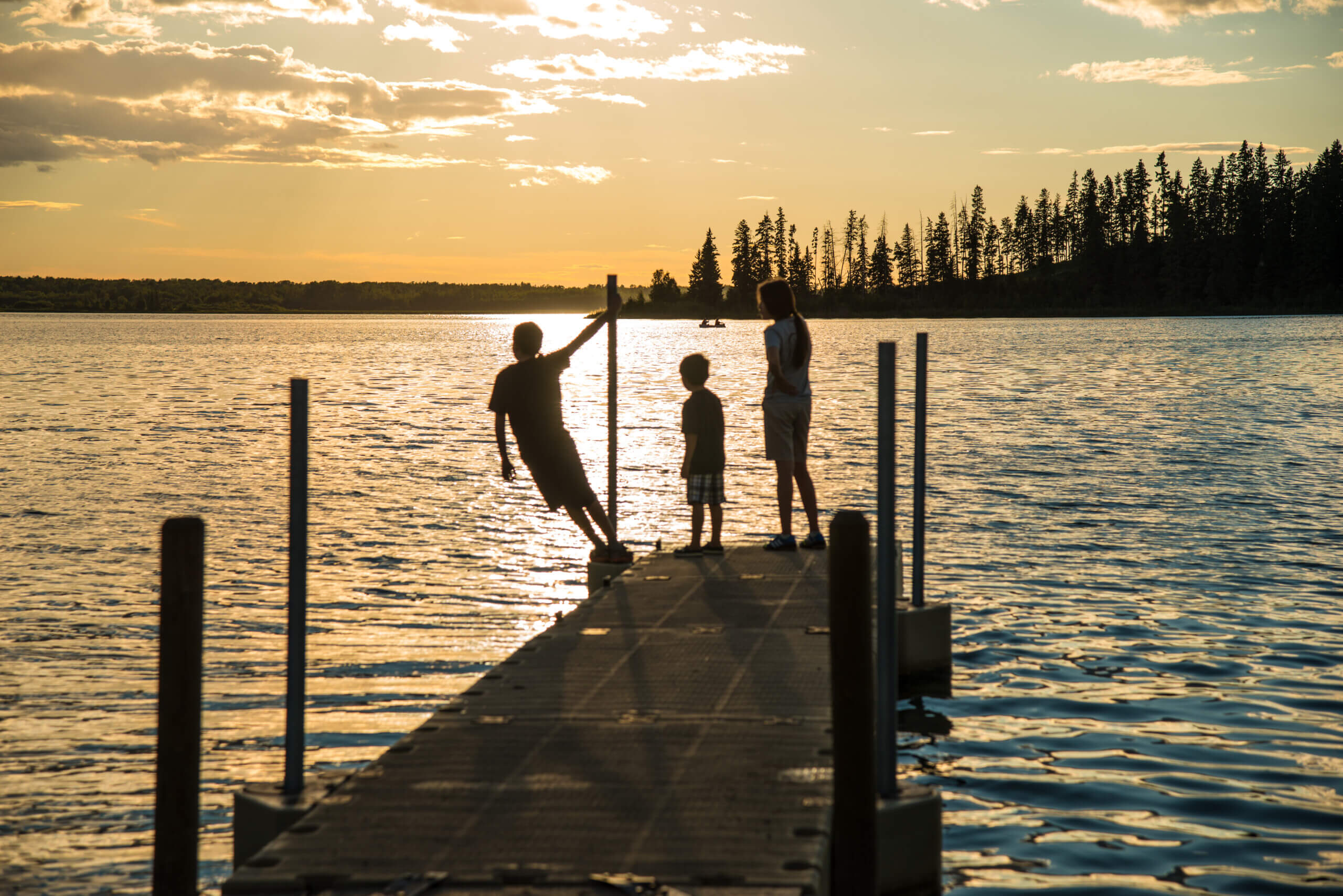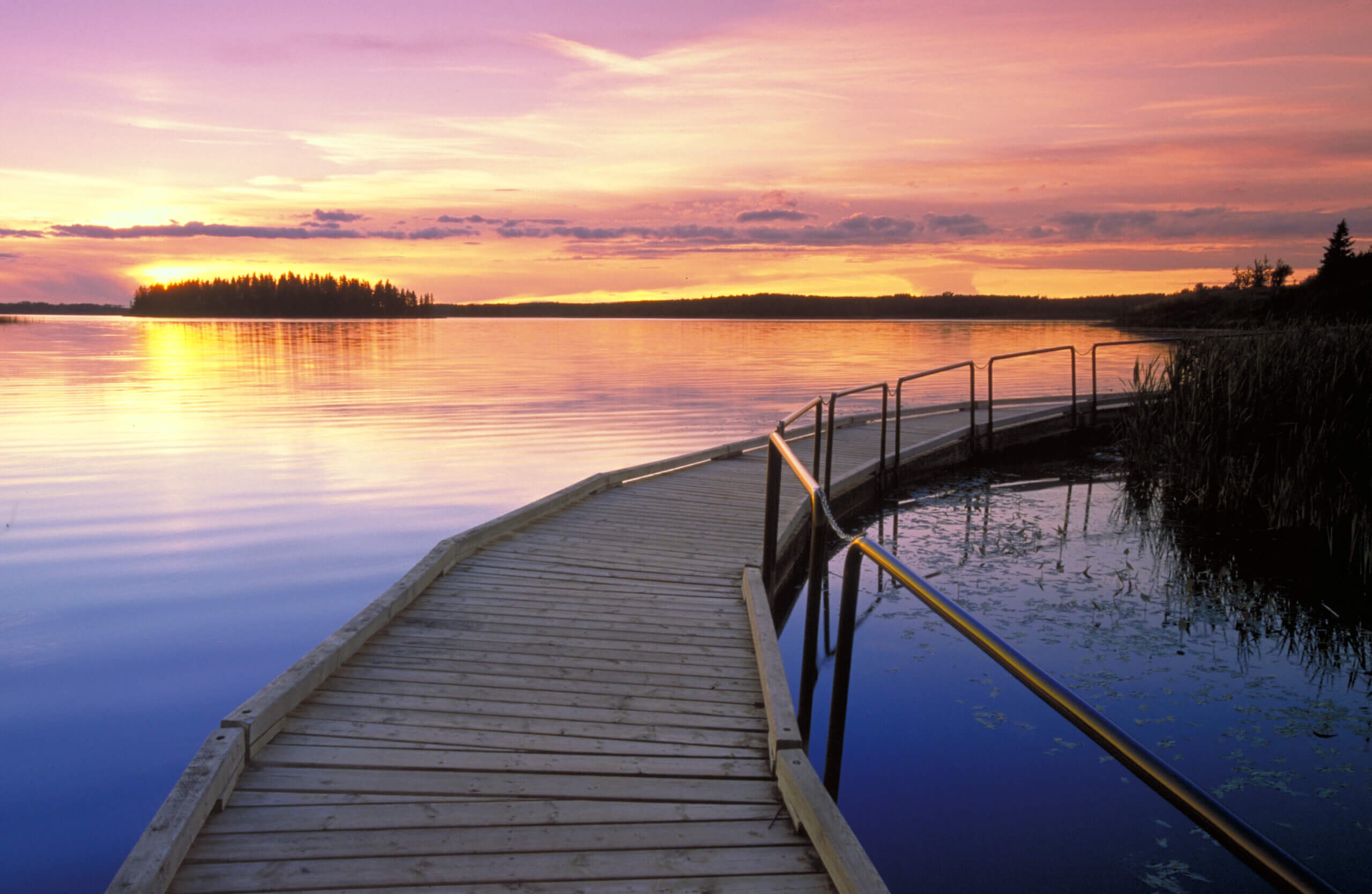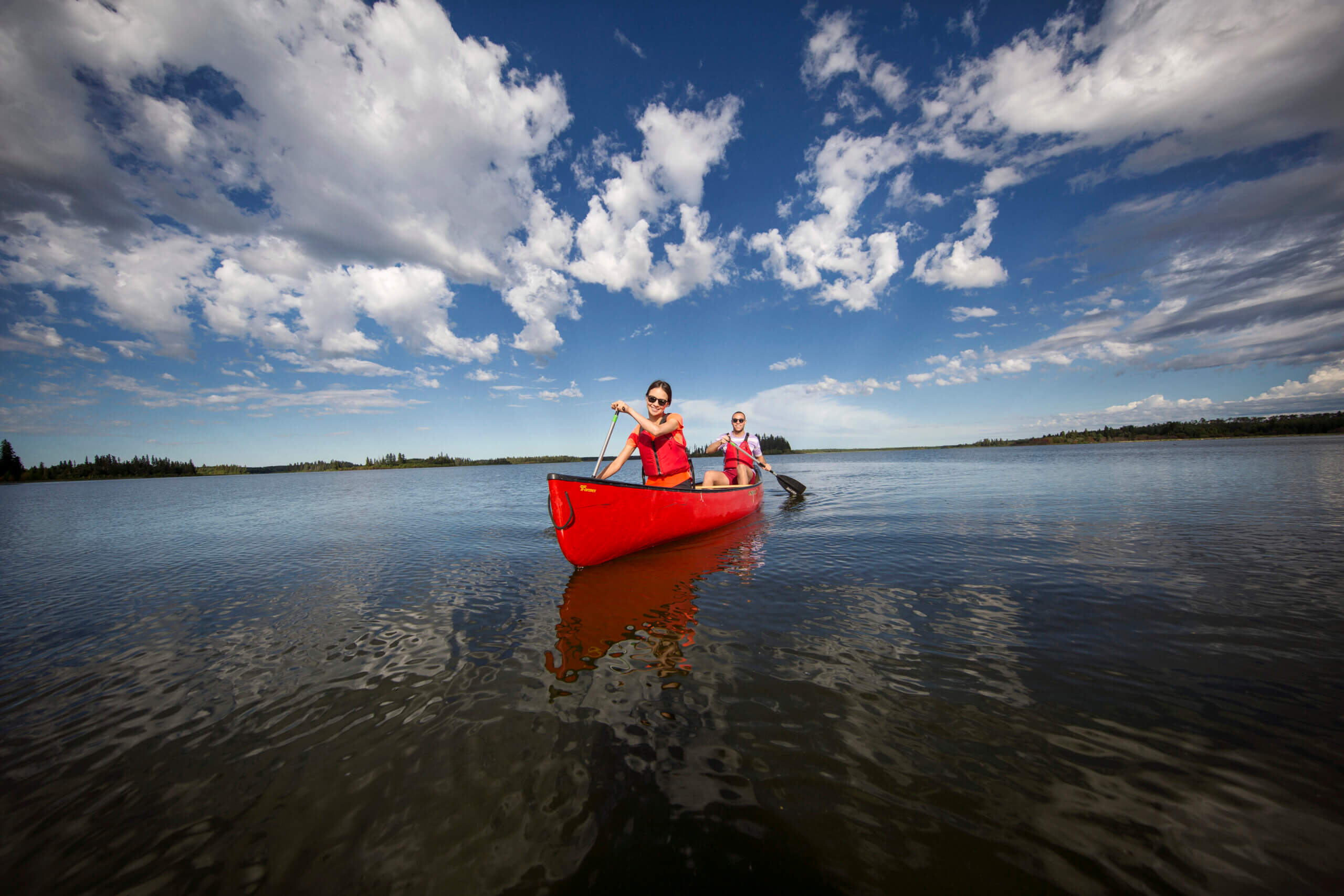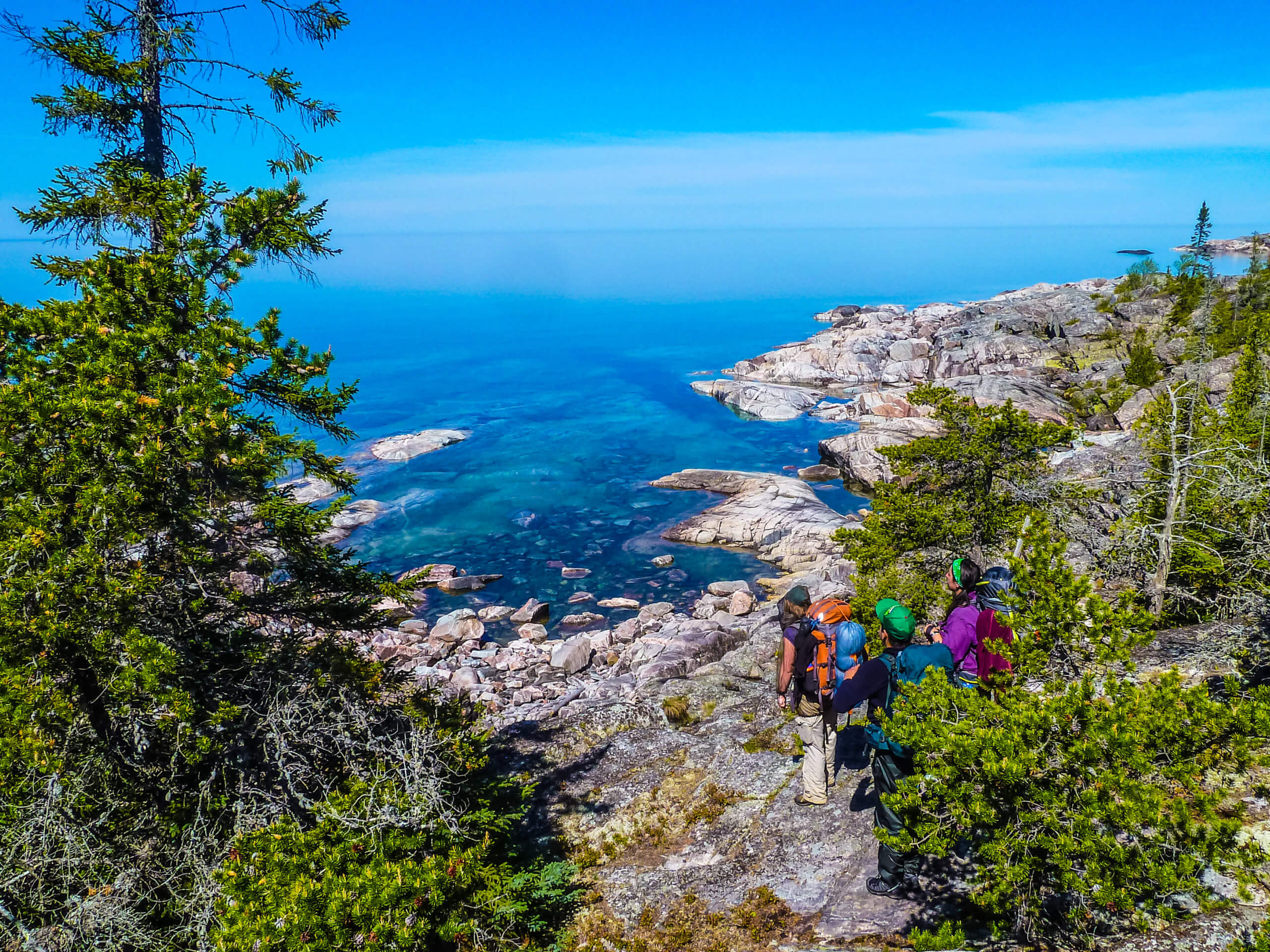Where Bison Roam: Discover Elk Island National Park
Located less than 40 minutes outside of Edmonton, Elk Island National Park is a UNESCO designated Biosphere Reserve, a haven for wildlife and a family-friendly place to get out in nature.
Visitors will find a diverse landscape of forests, lakes, wetlands and grasslands.
Things to do in Elk Island National Park
From hiking to wildlife viewing, Elk Island National Park is a year round destination for those looking to enjoy nature. Hiking trails range from easy to difficult and take you through marshes, forests and along shorelines. The short (400 m) Living Waters Boardwalk trail has a floating boardwalk with views over Astotin Lake.
Some of the trails offer opportunity for viewing wildlife such as bison, moose, elk and beavers. Bears are also present in the park so be bear aware when hiking.
In the summer, Astotin Lake is very popular for paddling. The lake is dotted with islands and secluded bays that make for a scenic paddle. Canoe, kayak and stand up paddle board rentals are available at the park. The beach has nice sand but the water is prone to swimmer’s itch so not recommended for prolonged swimming. There are picnic areas and a large playground nearby.
The park offers camping for those who want to stay overnight. When it gets dark, the park is a fantastic place to see the stars, the Milky Way and even the Northern Lights.
Why is Elk Island National Park Fenced?
Elk Island National Park is the only completely fenced-in national park in the country. It is also one of the few places in Canada where you can get caught up in a Bison traffic jam — and yes, those two things are connected.
The fencing is unusual for an area meant to preserve a natural setting, but it is there to help manage and conserve North America’s largest land mammal — the bison.
Once plentiful in the area and an integral part of life and survival of the Indigenous people who have lived on these lands since time immemorial, bison were brought to near extinction with the arrival of early settlers. North America’s bison population went from tens of millions to less than a thousand.
Elk Island National Park is part of the conservation efforts designed to reestablish bison populations. There are around 400 plains bison and 300 wood bison in the park and the fencing helps staff manage these populations. You can read more about these efforts here.
Visitors to the park can take a behind-the-scenes interpretive tour of the bison handling facilities and learn first-hand about bison conservation. Bison can be seen throughout the park since they are free to roam but there is a Bison Loop road (a 5-minute drive) that takes you through an area where you are likely to see the large animals by the dozens. Try going at dawn or dusk. The animals are especially easy to spot during the summer months. Remember that while bison look docile, they are wild animals and can become aggressive if they feel threatened. Follow these tips from Parks Canada to stay safe.
Getting to Elk Island National Park
From Edmonton, head east on Highway 16 and you will arrive at the park’s South Gate in approximately 48 km. Parking is available at all the trailheads and at Astotin Lake but can get very busy on summer weekends.
If you are visiting Edmonton without a car or just want to avoid the drive, you can take the free Parkbus from downtown Edmonton to Elk Island National Park on Saturdays. The bus picks up passengers at two locations in the city between 8:30 – 8:45 am and leaves from the park back to Edmonton at 3:30 p.m.

